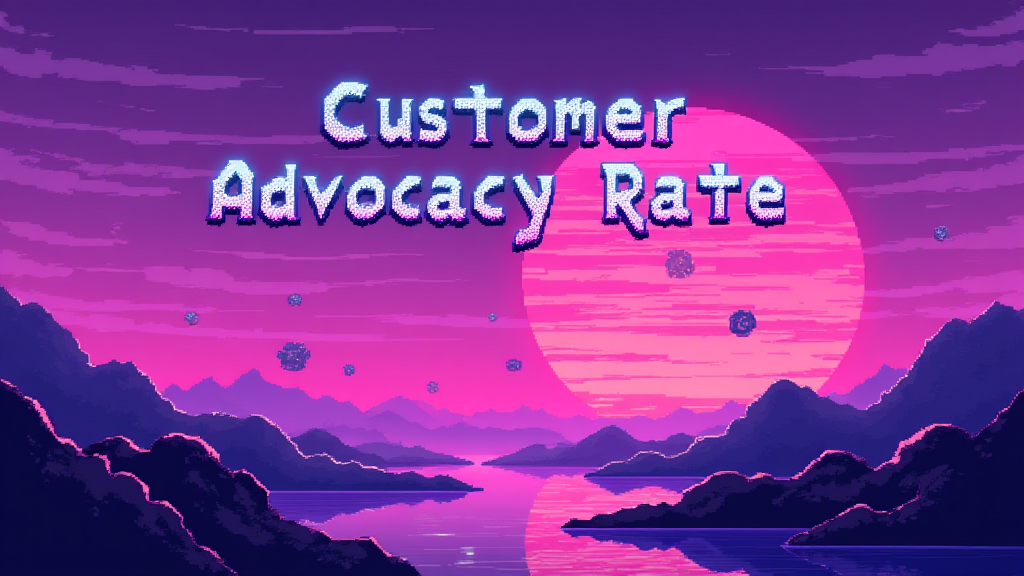Customer Advocacy Rate: Measure Brand Loyalty

Published on: October 01, 2024
In the world of Sales and Marketing Operations, understanding and measuring customer satisfaction is crucial for long-term success. One powerful metric that helps gauge customer loyalty and brand perception is the Customer Advocacy Rate. This key performance indicator (KPI) provides valuable insights into how likely your customers are to recommend your products or services to others.
What is Customer Advocacy Rate? 🤔
The Customer Advocacy Rate is a measure of the percentage of customers who are willing to actively promote and recommend a company's products or services to their peers, colleagues, or friends. It's a strong indicator of customer satisfaction, loyalty, and overall brand perception.
Why is Customer Advocacy Rate Important? 🌟
Understanding your Customer Advocacy Rate is crucial for several reasons:
- It reflects genuine customer satisfaction
- It can lead to organic growth through word-of-mouth marketing
- It helps identify brand ambassadors
- It can reduce customer acquisition costs
- It provides insights for product and service improvements
How to Calculate Customer Advocacy Rate 🧮
The Customer Advocacy Rate is typically calculated using the Net Promoter Score (NPS) methodology. Here's the formula:
Customer Advocacy Rate = (Number of Promoters / Total Number of Respondents) x 100
Promoters are customers who rate their likelihood to recommend your brand as 9 or 10 on a scale of 0-10.
Strategies to Improve Customer Advocacy Rate 📈
- Deliver exceptional customer experiences
- Implement a robust customer feedback system
- Address customer concerns promptly
- Offer personalized services and communication
- Create a customer loyalty program
- Engage with customers on social media platforms
Customer Advocacy Rate vs. Other Customer Satisfaction Metrics
| Metric | Focus | Calculation Method |
|---|---|---|
| Customer Advocacy Rate | Likelihood to recommend | Based on NPS methodology |
| Customer Satisfaction Score (CSAT) | Overall satisfaction | Direct rating of satisfaction |
| Customer Effort Score (CES) | Ease of doing business | Rating of effort required |
Common Challenges in Improving Customer Advocacy Rate 🚧
While striving to increase your Customer Advocacy Rate, you may encounter some obstacles:
- Inconsistent customer experiences across touchpoints
- Difficulty in collecting accurate and timely feedback
- Balancing personalization with scalability
- Aligning internal teams to prioritize customer advocacy
- Measuring the impact of advocacy on business outcomes
Leveraging Customer Advocacy for Growth 🚀
A high Customer Advocacy Rate can be a powerful driver for business growth. Here are some ways to leverage customer advocates:
- Implement a referral program
- Feature customer success stories and testimonials
- Invite advocates to exclusive events or beta testing
- Create a customer advisory board
- Collaborate with advocates on content creation
By focusing on improving your Customer Advocacy Rate, you can create a virtuous cycle of satisfied customers, positive word-of-mouth, and sustainable business growth.
Implementation Questions 🤓
As you consider implementing or improving your Customer Advocacy Rate measurement, ask yourself:
- How are we currently measuring customer satisfaction and loyalty?
- What processes do we have in place to collect and analyze customer feedback?
- How can we integrate Customer Advocacy Rate into our existing CRM or marketing automation tools?
- What strategies can we implement to turn satisfied customers into active advocates?
- How can we align our sales, marketing, and customer service teams around improving the Customer Advocacy Rate?

















